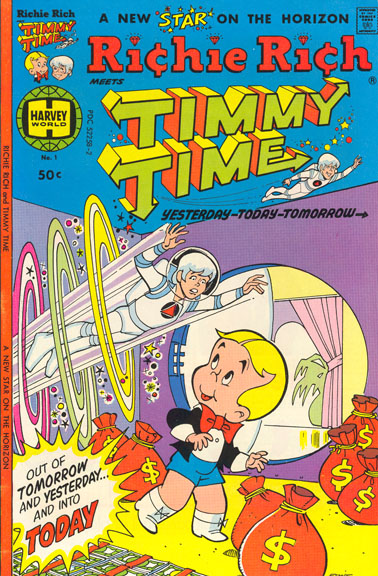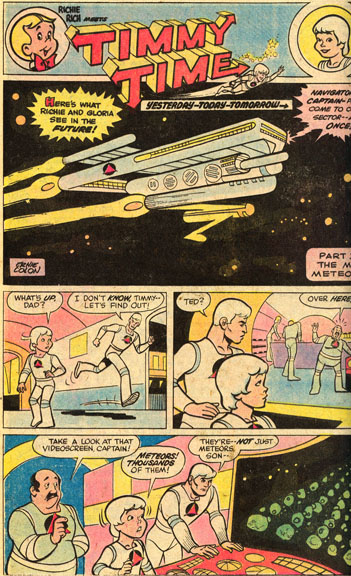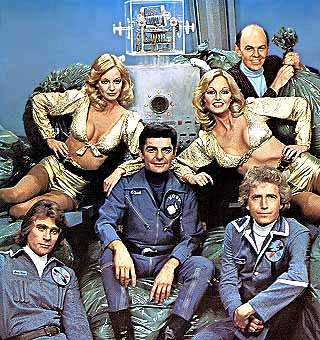 |
| Adventure Team meeting in progress! |
1) I'm assuming that, like my Joe, your Joe has completely fallen apart. Therefore, let's start by separating the front body piece from the back body piece. To do that, insert a thin screwdriver into the seam between the two sections. The upper arm socket is a good place to start since there is a hole there. Gently work your way along the seam to the neck, wiggling the screwdriver a bit to widen the gap between the two halves. Go slow and don't use too much force or you'll break the body parts. It may take a few passes around the body seam to fully pry it open. Once you get one side partially open, you may also want to place a screwdriver in that side to hold it open while you work on the other side. Eventually, the pins will work loose from the holes they are seated in. With luck, the pins will not break but, in all likelihood, most if not all the pins may break. Don't panic as we will be gluing the whole thing back together with modeling glue.
3) You'll want to use this same technique to pry apart the upper arm sections and the upper leg sections. Remove any leftover rubber bits and lay the pieces on your work table where they will need to go (e.g., upper right arm sections on the upper right hand side of the body, head stalk and head at the top, etc.). You want the work table to look like an exploded drawing of your Joe. That way, you know where the parts are supposed to go back together.
 |
| Muscle body GI Joe with body section opened. |
3) With the top of the body removed, you can also see how the legs were attached. In my case, the remnants of the rubber skeleton were visible in Joe's speedo shorts. A loop of rubber still clung to the large peg in his abdomen. Remove the excess rubber bits.
4) The upper leg sections should have a semi-circular cap inside. This sat just above the rubber half-ball part of the rubber skeleton. Since we will be using shock cord to string the legs to the torso, we'll need to create a plastic ball to replace the rubber half-ball. To do this, place some plastic modeling pellets in warm water. When they have softened, remove the blob of melted pellets and begin to shape them into a ball that will sit underneath the semi-circular cap. Once you have the ball at the right size, take a wooden skewer or some other thin, pointed rod and work it through the center of the ball. This will create the hole that the shock cord will pass through. It should only be just big enough for the cord to slide through. Once you have finished creating the ball, see how it fits under the disc and within the thigh pieces. If it's too big, you won't be able to close the two upper leg sections together when you reassemble it. Repeat the process for the other side.
5) Set the balls and caps aside. Now we will concentrate on the knee pegs. The knee pegs from an original GI Joe will work for the muscle body Joe with some adjustments (replacement pegs can be obtained from Cotswold Collectibles). There's a peg and slot arrangement the two halves of the upper leg sections. If you bore out the hole in the vinyl knee peg a little bit, you should be able to fit the peg onto the slot on one half of the upper leg. To check the fit, snap the two thigh pieces together and see how the peg moves. The hole in the top of the calf piece will be too big to receive the knee peg. To make the fit tight, I put some of the soft plastic pellet material into the calf hole and jammed the knee peg into it. The plastic pellet material will fill up the excess space and form a custom hole for the peg. You may have to cut away some excess material that might ooze out the top. With the pegs fitted to size, open up the thigh pieces and set aside. Repeat the process on the other thigh.
6) You can attach the feet to the calf pieces by using a wrist peg from an original Joe. Cut the original rivet out of the foot with needle nose pliers. If you do not have pliers that are small enough, you can use a small saw but be extremely careful not to cut up the foot. With the old rivet removed, line up the wrist peg with the loop inside the opening in the top of the foot. Insert a new rivet (3/32" X 7/16") in the hole on the foot from the small toe side of the foot so that it captures the loop of the peg. Rest the head of the peg on a hard surface and place a center punch inside the tube end of the rivet. Strike carefully with a hammer. The feet might move around loosely, but they will attach to the hole in the bottom of the calf.
7) Okay, this is where it gets a little dodgy. Start with an ten-inch length of shock cord. Wrap it around the long pin in the lower abdomen of the figure, then tie a tight knot in the center, leaving equal lengths of cord on either side of the knot. Run the lengths of cord through the leg holes of the speedo shorts. Place the outer half of the right thigh into the leg hole of the shorts and let it lay flat on the table with the length of cord laying inside the piece.
 |
| Another view of the leg repair. |
10) Remove the rivets from the elbow area of the forearms using the same technique as we used on the feet. Take the elbow joint from the repair kit and place the disc side into the slot of the forearm. Slide a new rivet through the hole in the slot starting from the thumb side. Position the head side of the rivet against the table and tap the tube side with a center punch the same way as was done on the feet.
11) Set the ball side of the elbow joint into the bottom part of the upper arm. With the two joints in place, glue the top half of the upper arm to the bottom half with modeling glue. Repeat the same process for the right arm.
12) If you are not rebuilding a talking GI Joe, you can skip this step. For those who are, this is when you return the talking mechanism to the chest cavity. In my case, the mechanism was not working, so I replaced the speaker with a new one from Cotswold Collectibles. Simply remove the old speaker and put in the new one, making sure that the indentation in the center of the speaker is facing out toward you. Set the talking mechanism back into the chest on top of the speaker. Thread the pull cord through the grommit in the shoulder and tie the cord to GI Joe's dog tags.
14) Once the body is glued together and the glue has fully dried, you can reattach the head plug and head. You will likely need to heat the head with a hair dryer to remove the head plug. Once you have heated the head, use a pair of needle nosed pliers to grip the head plug and pull down until the plug is removed. Thread the head plug cord through the head plug and pull the cord through the top. While holding the elastic cord taut, slide on the brass piece of tubing provided in the repair kit and crimp it to the top of the plug with a wire crimper. Cut away the excess elastic. Reheat the head with the hair dryer and slide the head over the plug.
 |
| Muscle Body Talking GI Joe Commander is fully assembled. |
"C'mon, the Adventure Team is needed!"

























